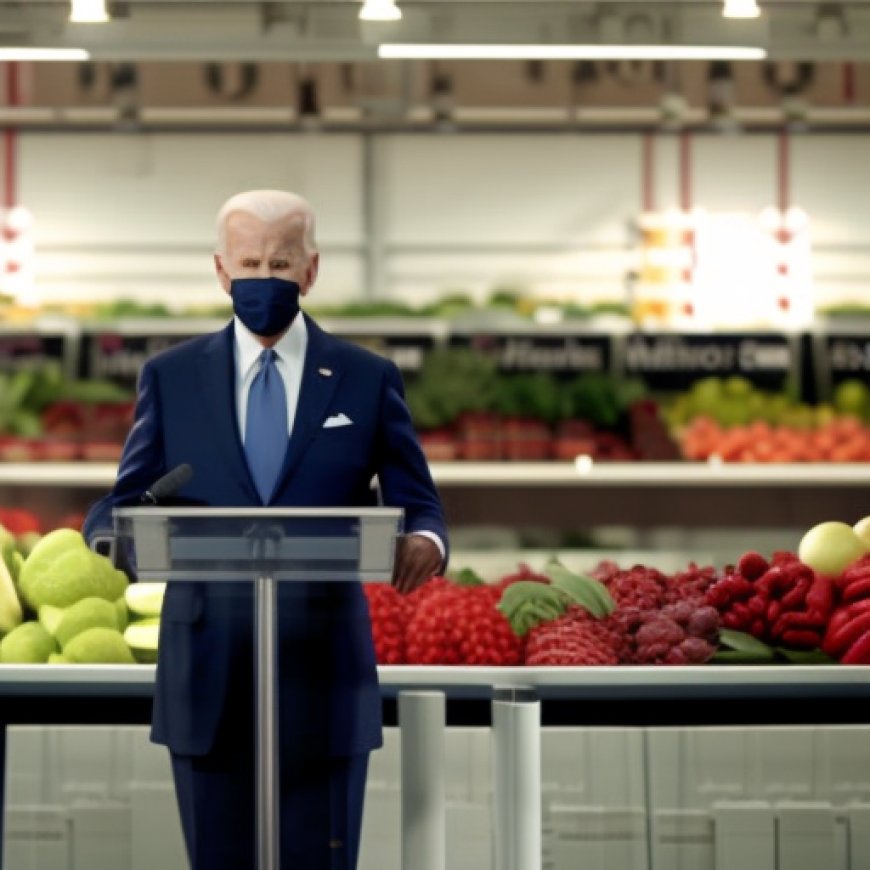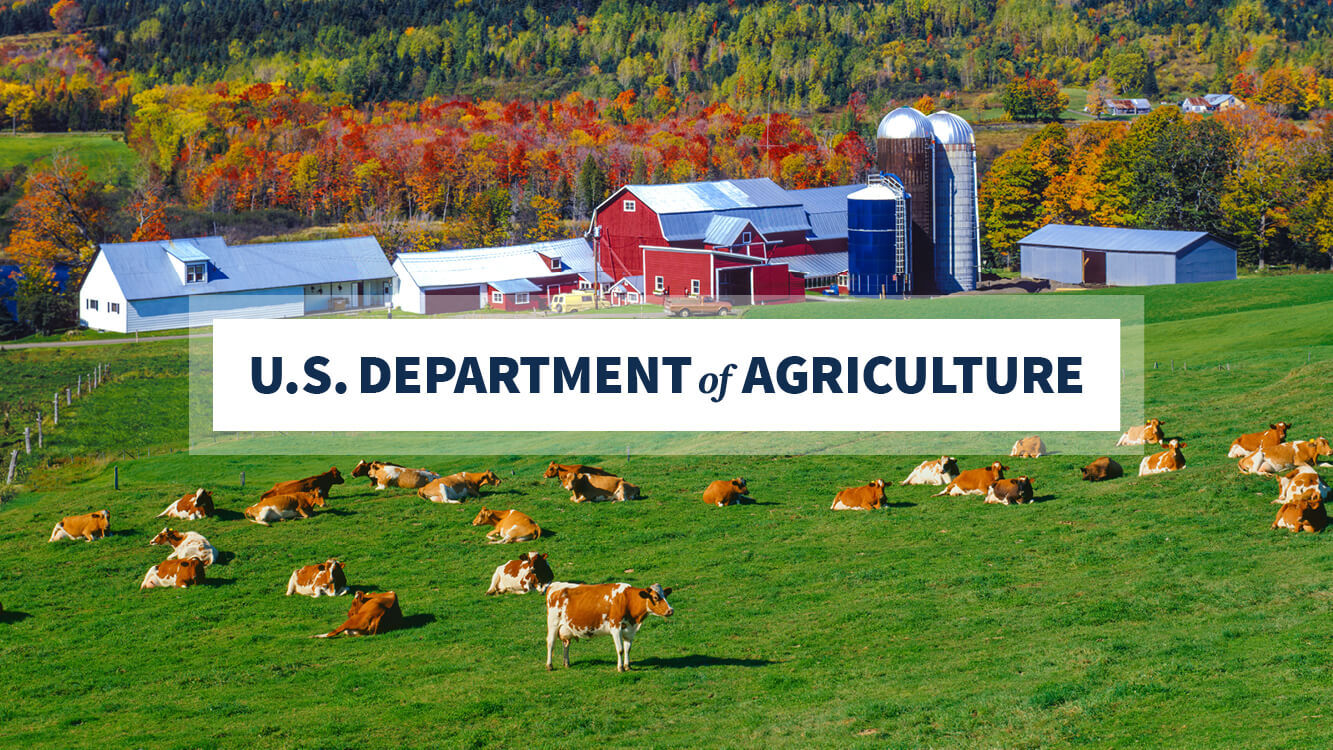Biden-Harris Administration Announces Investments in Urban Agriculture, Food and Market Access through President Biden’s Investing in America Agenda
Biden-Harris Administration Announces Investments in Urban ... USDA.gov


Biden-Harris Administration’s Investments in Sustainable Food Systems
Philadelphia, PA, July 21, 2023

The Biden-Harris Administration has announced a series of investments aimed at increasing market access and revenue streams for producers, strengthening the food system, and improving consumer access to locally grown foods and healthier choices. Agriculture Secretary Tom Vilsack and Deputy Secretary Xochitl Torres Small made the announcement in Philadelphia, Pennsylvania, as part of their efforts to showcase how President Biden’s Investing in America agenda is delivering transformative economic opportunities for families and businesses across the country.
Investments for Sustainable Food Systems
The U.S. Department of Agriculture (USDA) has unveiled several initiatives, including:
- Establishing 17 new Urban Service Centers and 10 new urban county committees to support urban farmers and provide access to farm loan, conservation, disaster assistance, and risk management programs.
- Investing approximately $10.7 million in the Patrick Leahy Farm to School Program to promote farm-to-school initiatives and improve access to nutritious foods for children.
- Expanding the Healthy Food Financing Initiative with approximately $30 million in funding for the new Local and Regional Healthy Food Financing Partnerships Initiative.
These investments align with the Sustainable Development Goals (SDGs) by promoting sustainable agriculture (SDG 2), ensuring healthy lives and promoting well-being for all (SDG 3), and fostering partnerships for sustainable development (SDG 17).
Impact of the Investments
Secretary Vilsack emphasized that these investments are part of President Biden’s agenda to grow local economies and build resilient communities, both in rural and urban areas. The Biden-Harris Administration is committed to supporting urban communities by providing market opportunities for small and mid-sized producers, strengthening the national and local food systems, and investing in urban agricultural operations. These steps will contribute to healthier food production closer to home, benefiting both families and farmers.
The investments announced today are in line with the Biden-Harris Administration’s Investing in America agenda and Bidenomics strategy, which aim to create more resilient and healthier communities across the country. They also support the National Strategy on Hunger, Nutrition, and Health, a key policy document of the administration.
Deputy Secretary Torres Small highlighted the importance of ensuring access to healthy, locally grown food for all families, regardless of their location. The investments demonstrate USDA and the Biden-Harris Administration’s commitment to supporting farmers of all sizes across the nation, enabling them to thrive and continue producing the healthy food that families rely on.
Background on Urban Agriculture
USDA recognizes the significance of urban agriculture and is taking steps to better serve urban farmers. The establishment of 17 new Urban Service Centers staffed by Farm Service Agency (FSA) and Natural Resources Conservation Service (NRCS) employees will provide urban farmers with access to farm loan programs, conservation programs, disaster assistance, and risk management programs. Additionally, 10 new urban county committees will assist with the local administration of FSA programs.
To strengthen the Urban Service Centers and urban county committees, USDA is investing $40 million into partnerships with community-based organizations. These partnerships will focus on outreach, education, and technical assistance to establish a customer base for the new Urban Service Centers. The goal is to improve the sustainability and long-term viability of urban farms, enhancing supply chain resiliency in local food systems. For example, in Philadelphia, USDA is partnering with PASA Sustainable Agriculture to provide community outreach, engagement events, customized trainings, workshops, and direct technical assistance for urban growers.
USDA’s efforts to support urban agriculture align with SDG 11 (Sustainable Cities and Communities) by promoting sustainable urbanization and inclusive, safe, resilient, and sustainable cities.
Background on Farm to School Grants
The USDA’s Food and Nutrition Service (FNS) has awarded $10.7 million to 103 projects across the country under the Patrick Leahy Farm to School Grant Program. These investments will benefit 1.2 million children from nearly 3,000 schools in 40 states and Guam, providing them with access to tasty and nutritious foods while supporting local farmers and producers. The grants also prioritize reaching historically underserved and marginalized communities.
Farm to school programs play a crucial role in educating children about nutrition and agriculture through hands-on experiences. By planting, watering, and harvesting fruits, vegetables, and herbs, children gain valuable knowledge about healthy food choices. The program also contributes to achieving nutrition security, ensuring consistent and equitable access to healthy, safe, and affordable food for optimal health and well-being. Since its inception in 2013, the Farm to School Grant Program has awarded $75 million across all 50 states, the District of Columbia, the U.S. Virgin Islands, Guam, and Puerto Rico, benefiting over 25 million students in more than 59,000 schools.
The Farm to School Grants align with SDG 2 (Zero Hunger) by promoting sustainable agriculture and ensuring access to nutritious food for all.
Background on Local and Regional Healthy Food Financing Partnerships Program (HFFI Partnerships Program)
In August 2023, the Reinvestment Fund, in partnership with USDA, will invite applications for $30 million in grant funding through the new HFFI Partnerships Program. This program aims to establish and grow local, regional, or state food financing programs by awarding grants to regional, state, or local public-private partnerships. The HFFI Partnerships Program expands on the existing Healthy Food Financing Initiative (HFFI) by engaging partners to improve access to fresh, healthy, and affordable food in underserved areas.
HFFI works towards SDG 3 (Good Health and Well-being) by improving access to healthy foods in underserved areas, creating quality jobs, and revitalizing low-income communities. USDA is partnering with Reinvestment Fund, a national Community Development Financial Institution (CDFI), to administer HFFI.
Later this year, USDA will further expand the Healthy Food Financing Initiative by offering grants, loans, and technical assistance to food retailers and enterprises in underserved areas. These efforts are part of the Biden-Harris Administration’s commitment to equitable access to healthy food and align with SDG 17 (Partnerships for the Goals) by fostering partnerships for sustainable development.
Conclusion
The Biden-Harris Administration’s investments in sustainable food systems demonstrate their commitment to achieving the SDGs. By supporting urban agriculture, farm-to-school initiatives, and healthy food financing partnerships,
SDGs, Targets, and Indicators in the Article
1. Which SDGs are addressed or connected to the issues highlighted in the article?
- SDG 1: No Poverty
- SDG 2: Zero Hunger
- SDG 3: Good Health and Well-being
- SDG 8: Decent Work and Economic Growth
- SDG 11: Sustainable Cities and Communities
- SDG 12: Responsible Consumption and Production
- SDG 17: Partnerships for the Goals
2. What specific targets under those SDGs can be identified based on the article’s content?
- SDG 1.4: By 2030, ensure that all men and women, in particular the poor and the vulnerable, have equal rights to economic resources, as well as access to basic services, ownership, and control over land and other forms of property, inheritance, natural resources, appropriate new technology, and financial services, including microfinance.
- SDG 2.3: By 2030, double the agricultural productivity and incomes of small-scale food producers, in particular women, indigenous peoples, family farmers, pastoralists, and fishers, including through secure and equal access to land, other productive resources and inputs, knowledge, financial services, markets, and opportunities for value addition and non-farm employment.
- SDG 3.4: By 2030, reduce by one-third premature mortality from non-communicable diseases through prevention and treatment and promote mental health and well-being.
- SDG 8.3: Promote development-oriented policies that support productive activities, decent job creation, entrepreneurship, creativity, and innovation, and encourage the formalization and growth of micro-, small-, and medium-sized enterprises, including through access to financial services.
- SDG 11.3: By 2030, enhance inclusive and sustainable urbanization and capacity for participatory, integrated, and sustainable human settlement planning and management in all countries.
- SDG 12.2: By 2030, achieve the sustainable management and efficient use of natural resources.
- SDG 17.17: Encourage and promote effective public, public-private, and civil society partnerships, building on the experience and resourcing strategies of partnerships.
3. Are there any indicators mentioned or implied in the article that can be used to measure progress towards the identified targets?
- Indicator 1.4.2: Proportion of total adult population with secure tenure rights to land, with legally recognized documentation and who perceive their rights to land as secure, by sex and by type of tenure.
- Indicator 2.3.1: Volume of production per labor unit by classes of farming/pastoral/forestry enterprise size.
- Indicator 3.4.1: Mortality rate attributed to cardiovascular disease, cancer, diabetes or chronic respiratory disease.
- Indicator 8.3.1: Proportion of informal employment in non-agriculture employment, by sex.
- Indicator 11.3.1: Ratio of land consumption rate to population growth rate.
- Indicator 12.2.1: Material footprint, material footprint per capita, and material footprint per GDP.
- Indicator 17.17.1: Amount of United States dollars committed to public-private and civil society partnerships.
Table: SDGs, Targets, and Indicators
| SDGs | Targets | Indicators |
|---|---|---|
| SDG 1: No Poverty | Target 1.4: By 2030, ensure that all men and women, in particular the poor and the vulnerable, have equal rights to economic resources, as well as access to basic services, ownership, and control over land and other forms of property, inheritance, natural resources, appropriate new technology, and financial services, including microfinance. | Indicator 1.4.2: Proportion of total adult population with secure tenure rights to land, with legally recognized documentation and who perceive their rights to land as secure, by sex and by type of tenure. |
| SDG 2: Zero Hunger | Target 2.3: By 2030, double the agricultural productivity and incomes of small-scale food producers, in particular women, indigenous peoples, family farmers, pastoralists, and fishers, including through secure and equal access to land, other productive resources and inputs, knowledge, financial services, markets, and opportunities for value addition and non-farm employment. | Indicator 2.3.1: Volume of production per labor unit by classes of farming/pastoral/forestry enterprise size. |
| SDG 3: Good Health and Well-being | Target 3.4: By 2030, reduce by one-third premature mortality from non-communicable diseases through prevention and treatment and promote mental health and well-being. | Indicator 3.4.1: Mortality rate attributed to cardiovascular disease, cancer, diabetes or chronic respiratory disease. |
| SDG 8: Decent Work and Economic Growth | Target 8.3: Promote development-oriented policies that support productive activities, decent job creation, entrepreneurship, creativity, and innovation, and encourage the formalization and growth of micro-, small-, and medium-sized enterprises, including through access to financial services. | Indicator 8.3.1: Proportion of informal employment in non-agriculture employment, by sex. |
| SDG 11: Sustainable Cities and Communities | Target 11.3: By 2030, enhance inclusive and sustainable urbanization and capacity for participatory, integrated, and sustainable human settlement planning and management in all countries. | Indicator 11.3.1: Ratio of land consumption rate to population growth rate. |
| SDG 12: Responsible Consumption and Production | Target 12.2: By 2030, achieve the sustainable management and efficient use of natural resources. | Indicator 12.
Behold! This splendid article springs forth from the wellspring of knowledge, shaped by a wondrous proprietary AI technology that delved into a vast ocean of data, illuminating the path towards the Sustainable Development Goals. Remember that all rights are reserved by SDG Investors LLC, empowering us to champion progress together. Source: usda.gov
Join us, as fellow seekers of change, on a transformative journey at https://sdgtalks.ai/welcome, where you can become a member and actively contribute to shaping a brighter future.
|








